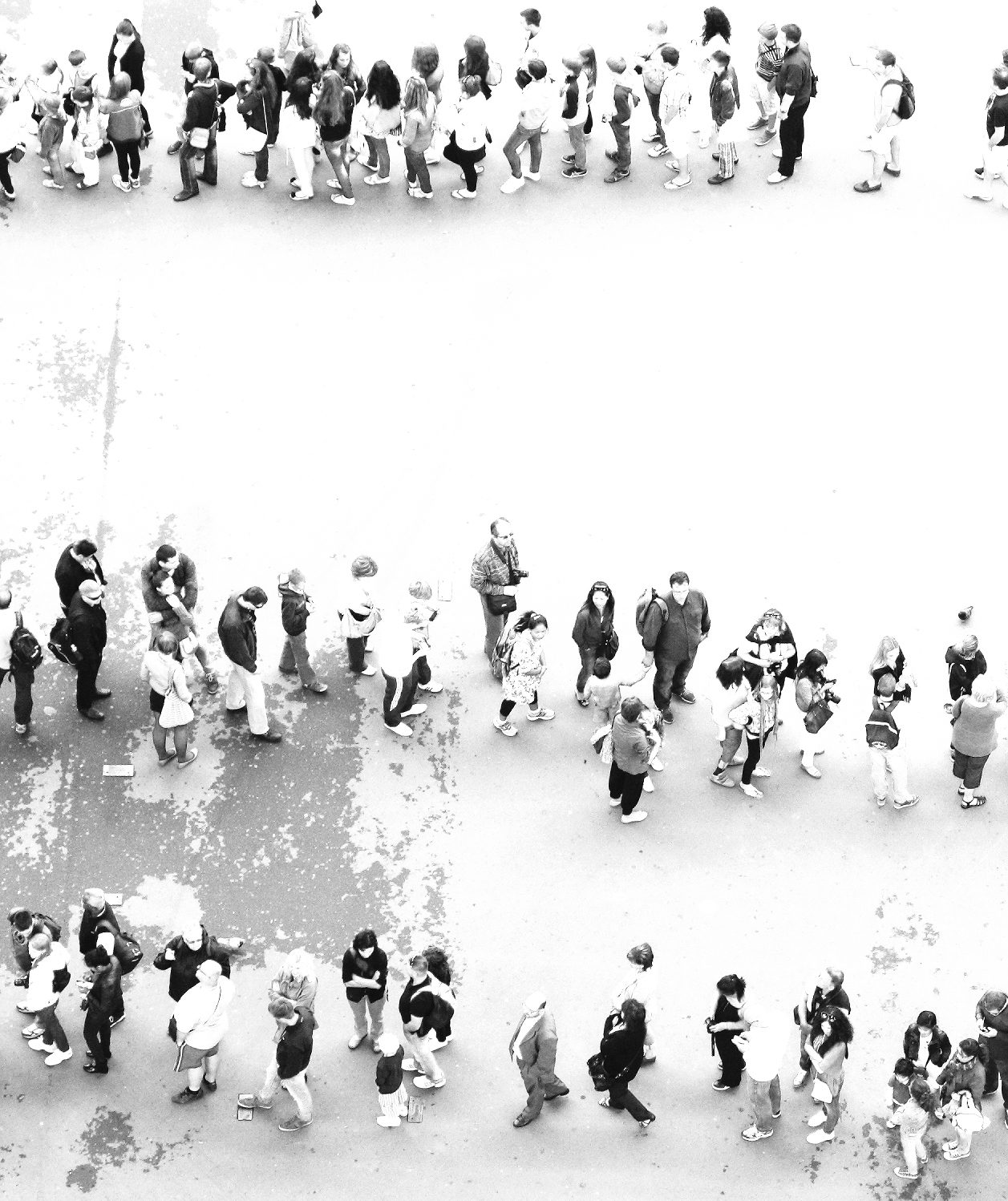The Good
Why Ideas is still a good idea
It’s hard to talk about the CBC these days without referring to cutbacks in the same breath. But it’s precisely because of the threat posed by those cutbacks-the context for numerous editorial polemics about the legitimacy of public broadcasting-that we have chosen to pay tribute to what many call “The New Yorker of the air,” and a vehicle for rich, full-length journalistic investigation.
Last fall, 3.6 million English-speaking Canadians tuned into CBC radio-more people than ever before. Ideas, one of the shows they tuned into, could easily be labelled as quintessential public broadcasting fare. The hour-long program, which airs five days a week on the AM network, is everything commercial broadcasting is not. It makes no attempt to target the lowest common denominator to attract a mass audience. It is just concerned with Ideas. As a result, the show has been charged with being eccentric, esoteric, even elitist.
“Ideas is not in any way parochial…. [The producers] go at something with the idea they are going to wrestle it … not with a stupid insecurity that is so common. They don’t have to moronically Canadianize things,” says journalist and filmmaker Kevin McMahon, who has done two shows for Ideas that were eventually made into films (The Falls, a historic and symbolic look at Niagara Falls, and In the Reign of Twilight, about the militarization of the Canadian Arctic during the Cold War).
Ideas is a good idea-and it’s been one for 30 years. In a deadening sea of talk, all-news and oldies formats, Ideas remains an island of intelligence. “There is an incredible fossilization of ideas …. All public discourse is built on a set of assumptions and beliefs… A good idea is one that examines and challenges those types of assumptions,” says Ideas executive producer Bernie Lucht.
Still, an episode of Ideas can be exhausting. The in-depth, probing nature of the show takes you on a mind-bending journey through topics ranging from HIV infection, witchcraft, beatnik culture and the rise and fall of the middle class, to the hanging gardens of Babylon. Its broad scope covers the humanities, sciences, pop culture and the arts.
The show is known for its high production values, and uses sound to transport you to Charles Dickens’ London, modern Korea-or into the mind of a schizophrenic. For some 360,000 listeners, or six percent of the potential English-speaking audience, according to October 1995 Broadcast Bureau of Measurement (BBM) statistics, it can be a smooth and enlightening journey. For others, it’s, well, boring.
Ideas wants to elicit the “ah-ha” response from its listeners: producing shows that will make people think, visualize-a daunting task in an age where communications technology encourages instant gratification and helps shrink attention spans. Ideas endeavors to illuminate and delight by connecting theories and events within a historical context so patterns can be observed. Sound confusing? Well, sometimes it is.
Not all episodes work, as Lucht admits: “Shows don’t succeed when we don’t go beyond what other journalism organizations are already providing; or sometimes the storytelling element is not clear.”
When asked why Canadians preoccupied with an economic bottom-line should continue to fund a show like Ideas, its host and 51-year broadcast veteran Lister Sinclair segues into another analogy: “Vivaldi, called El Preto Rojo because he had red hair, was the musical director of a girls’ orchestra in Venice. Jean-Jacques Rousseau imagined the girls to be as beautiful as their music and wanted to see them … but they were mostly deformed, abandoned orphans of syphilitic prostitutes brought up by sisters! They were the best orchestra in Europe at the time-not second best, the best. The main point is that these poor women-deformed, short-lived, deprived-Vivaldi gave them all self-esteem, pride and honour. He did something more than be a great musician …. We toured Venice-evervone was grumbling about cutbacks……”
Ideas is just about as satisfying as an hour can be-if you’re interested in ideas. Consider these five:
THE PLAGUE
“Close the town! Walls and barriers. Bricks and visas. The old-fashioned ones kept people out-the Great Wall of China. The up-to-date ones kept people in-the Iron Curtain. The postmodern ones-who knows? Like the wall around the graveyard-unnecessary. Those inside can’t get out and those outside don’t want to get in …. And then there’s ‘Checkpoint Charlie,’ because even under plague, living towns are not always as simple as graveyards…,” Sinclair drones, in his ominous, ethereal, mid-Atlantic voice.
“The Plague” is an example of a show that would be hard to imagine in any other format but radio. It forces listeners to conjure up images, work on their symbolic meaning in order to shed light on historical events, and then apply these revelations to more recent occurrences.
Producer Sara Wotch uses French existentialist Albert Camus’ plague analogy as an allegory of plagues of the spirit: facism, tyranny and ethnic cleansing. The central image is of an Alpine town infested with plague: a metaphor for Europe before WWI. It is a place where everyone is diseased-but they are up above it all and fail to notice what is going on. “The Plague” reveals historical patterns of behaviour and applies them to contemporary scenarios: “Rwanda, East Timor, Argentina, Vietnam, Chechnya, Lebanon, Korea, Northern Ireland, trouble in the Balkans …. The war to end war, each and every one of them. All the news, the blood, the sweat, the lies and tears of history….”
COMMON CHORDS
“Dip peu dip peu dip peu dip peu dip peu … dip, do, dom, bome bi bome, bome bome bome bome bome bome … da da da da da da, da da….” American trumpet player Wynton Marsalis’ scats what sounds like an upbeat jazz riff. But he is actually demonstrating the baroque invention of 8/9 time. Marsalis’ beats are overlaid with one of Bach’s Brandenburg Concertos. By “listening to this old music in a new way,” says producer Alan Guettel, an understanding of classical music isn’t necessary to appreciate the connections between old and new. His two-part series, “Common Chords,” enlightens listeners with jazz music’s baroque roots. We learn that the early 17th-century rejection of the restrained and orderly style of Renaissance art lead to dramatic innovations in music, like the musical chord. We also discover that the delineation of treble and bass resulted in harmonic progressions that remain the foundation of contemporary music. “Common Chords” takes listeners on a musical history tour from Gregorian chant to Herbie Hancock.
THE END OF DAYS
“For a time, the land itself conspired with the inhabitants to create magic and harmony….” Sound up: birds chirping and fast-flowing water, as a man’s voice describes a land of corn, oil, wine, fruits, gardens and orchards. Then the sound of cow bells and a busy marketplace.
We are in medieval Spain, a time of conviventia, or the tolerant co-existence of three great religions-Judaism, Christianity and Islam-one of the West’s most intellectual and artistic societies. In “The End of Days,” author Erna Paris, who wrote an eight-part Ideas series on sex and civilization in 1975 (one of the first pieces of Canadian journalism to explore historical and philosophical attitudes towards women), loops from the 15th century expulsion of Spanish Jews to 1992, when the historic bonds between the Spanish monarchy and Jews are celebrated in Madrid. Paris moves from medieval times to the Spanish Inquisition, when King Ferdinand and Queen Isabella championed the cause of “religious purity” to form a modern, centralized state. Ideas tells the story of the rise and fall of an integrated society and raises questions about ethnicity and religion which resonate today.
SOWETO -SO WHERE TO?
Ideas goes to the new South Africa. Writer Sifiso Ntuli tells the story of a trip through his homeland, a year after the 1994 election of African National Congress leader Nelson Mandela. The show blends interviews of “people of the sun”-Zulus, Swazis, Afrikaners, English, Asians-with indigenous and contemporary South African music and clips from the media before and after the end of apartheid.
Ntuli calls Johannesburg “the City of Gold-where the rich and poor are rubbing shoulders with people with BMWs and cellular phones.” A black South African filmmaker explains: “Blacks were never prepared for the consequences of their own freedom. We need to own the real corporate wealth; build our own empire.” Post-apartheid, black people continue to work for white people. Nelson Mandela may be in charge, but white people still own the land.
In the new South Africa, black doctors actually practice on who they want. Ntuli explains: “We weren’t allowed to see Madam [white women] in a state of undress.” An old schoolmate, “Dr. Don,” chuckles: “We weren’t allowed to see white boobs.” Yet, Mandela’s government has failed to deliver its promise of free health care and many blacks must steal to afford basic services. While the show exposes some progress in racial equality, it makes it clear the “seeds of change” have just sprouted.
FEMALE EJACULATION
Producer Sue Campbell’s show on female ejaculation confronts the phenomenology of sexual pleasure. Are men and women wildly different-apples and oranges-or just variations of each other-more like apples and crab apples?
Ideas invites listeners to sit in on a ejaculation workshop: Dr. Shannon Bell, a professor of feminist theory and political philosophy, demonstrates that women can and should ejaculate.
“In order to get an internal erection-brrrrrummmmm … one of the best things is a really small vibrator … it really sort of … ummm, feels nice … I ejaculate normally pretty easy-I’m in the scientific group they call easy expulsers; it takes me between one and three minutes….” Low buzz of the vibrator, then 15 seconds of dead air. “I’m feeling like … I’m starting to … to have to ejaculate … I can feel sort of … ahh … internal contractions….” A loud brrrrr as the vibrator revs up its speed. “I like to ejaculate on mirrors … it makes this phenomenal sound-it’s actually very beautiful … I’m ready to ejaculate and I’m masturbating … I’ve got my finger between my two lips … I’m also pushing on the ducts that surround my urethra-I can feel them filling with fluid … haaaa … aaaah.” Her breathing quickens. “I’m getting turned on … ahhhh … I’m getting more turned on … ah uh … ah uh … [deep inhale] … ahhhh … ah uh, … ah uh, .., ah uh, .., ah uh, ah uh, ah uh ah uh [inhale, sniff] …. AHUHHH .. YESSS…! BINGGG … YES … WAH-HOOO … ! ” Bell’s successful ejaculation is followed by ecstatic laughter and cheering. Elapsed time-about two minutes.











